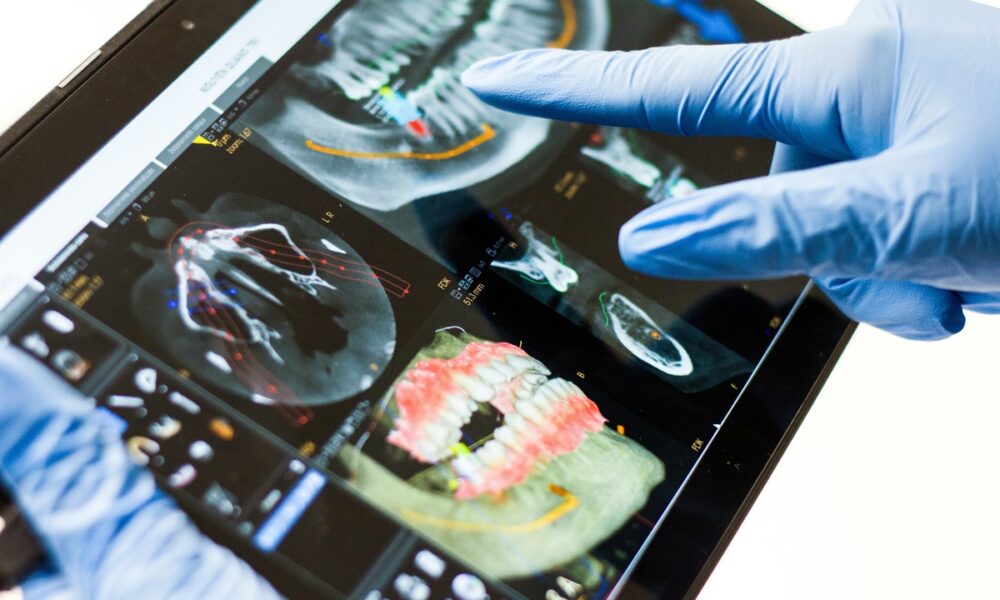A rare genetic condition known as cerebral cavernous malformations (CCM) resulted in significant health complications for Sakura Tafoya, a young girl from Santa Fe, New Mexico. The incident began on a fall day in 2021 when the then four-year-old attempted to head a soccer ball, leading to a pool of blood forming in her brain. This alarming event highlighted the unusual prevalence of CCM in New Mexico, particularly among families with Hispanic heritage.
Sakura’s father, Jared Tafoya, recalled the moment vividly. After her attempt to play, Sakura fell and struggled to regain her balance, displaying slurred speech and difficulty swallowing. Her family quickly called emergency services, and she was transported to a local hospital. Initial scans revealed significant bleeding on one side of her brain, a result of CCM, which affects approximately 1 in 500 people globally, although most remain asymptomatic. Of those, around 20% inherit the condition, with the CCM1 mutation being particularly common in New Mexico.
According to Dr. Tarun Girotra, a neurologist at the University of New Mexico Health Sciences Center, the state sees a higher incidence of CCM than most places. He noted, “For us, it’s not a rare disease.” The genetic mutation linked to CCM in New Mexico can be traced back to early Spanish settlers, with the CCM1 variant responsible for at least 90% of cases in the region.
As Sakura was airlifted to the University of New Mexico Hospital, her condition worsened, leading to multiple seizures. Her mother, Kristina Tafoya, described the experience as surreal, stating, “It almost didn’t feel like it was real life.” Scans confirmed that a cluster of blood vessels leaking into her brain tissue was the source of her symptoms.
Cerebral cavernous malformations occur when capillaries with abnormally thin walls merge, forming lesions that can lead to bleeding in the brain. These lesions can cause severe neurological issues, including seizures, headaches, and even paralysis. The number of lesions in individuals with the inherited form of CCM can range significantly, with some patients having hundreds.
The Tafoya family’s history with CCM is not an isolated case. Jared Tafoya himself had experienced headaches and had undergone imaging that revealed multiple anomalies in his brain and spinal column. Despite these findings, neither he nor his doctors were familiar with CCM until a relative’s surgery brought the condition to light.
While the majority of CCM cases are sporadic, approximately 20% are genetic, with the CCM1 mutation predominantly affecting Hispanic families in New Mexico. This genetic predisposition has led to a notable prevalence of CCM in the state. As noted by Dr. Leslie Morrison, a retired pediatric neurologist, “If you think about a strand of DNA as a string of beads, one of the beads has a mistake on it,” illustrating the genetic nature of the condition.
Sakura’s treatment options were limited due to the location of the bleeding. Surgery was deemed too risky as it would involve navigating areas of the brain responsible for motor skills. Fortunately, the bleeding ceased after about 24 hours, allowing doctors to manage her condition with medications. Despite this, there is currently no cure for CCM, and ongoing research aims to develop effective treatments.
Recent studies funded by the National Institutes of Health have investigated the connection between the CCM1 mutation and vitamin D depletion, as well as the role of gut bacteria in the severity of lesions. Although no definitive treatments are available yet, lifestyle changes such as vitamin D supplementation and maintaining healthy blood pressure may help manage the condition.
The New Mexico Legislature has recognized the significance of CCM research, allocating over $600,000 for studies and outreach in recent budget bills. This funding aims to improve understanding and treatment options for CCM patients.
Living with CCM poses challenges, particularly in rural areas where access to healthcare is often limited. Many patients travel significant distances for appointments, which can be financially burdensome. Dr. Morrison, who has personally experienced these challenges, emphasizes the need for a better healthcare system to support patients with CCM.
Four years after her initial bleed, Sakura continues to undergo regular MRI scans to monitor her condition. She is now a third grader who dreams of becoming a tattoo artist. Her family remains vigilant, carefully balancing her activities to minimize the risk of head injuries. Kristina Tafoya expressed the constant concern, stating, “It’ll always be in the back of our heads: Is this another rupture?”
The Tafoya family’s journey underscores the importance of awareness and research into cerebral cavernous malformations, a condition that impacts many families in New Mexico. With continued efforts in research and support, there is hope for better management of this challenging genetic disorder.






